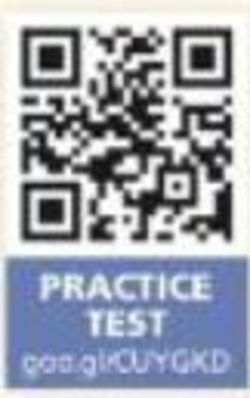
EBK CAMPBELL BIOLOGY
10th Edition
ISBN: 9780136539414
Author: Reece
Publisher: VST
expand_more
expand_more
format_list_bulleted
Textbook Question
Chapter 9, Problem 1TYU
Level 1: Knowledge/Comprehension
- 1. The immediate energy source that drives ATP synthesis by ATP synthesis during oxidative phosphorylation is the
- (A) Oxidation of glucose and other organic compounds.
- (B) Flow of electrons down the electron transport chain.
- (C) H+ concentration gradient across the membrane holding ATP synthase.
- (D) Transfer of phosphate to ADP.

Expert Solution & Answer
Want to see the full answer?
Check out a sample textbook solution
Students have asked these similar questions
Briefly state the physical meaning of the electrocapillary equation (Lippman equation).
Explain in a small summary how:
What genetic information can be obtained from a Punnet square? What genetic information cannot be determined from a Punnet square?
Why might a Punnet Square be beneficial to understanding genetics/inheritance?
In a small summary write down:
Chapter 9 Solutions
EBK CAMPBELL BIOLOGY
Ch. 9.1 - Prob. 1CCCh. 9.1 - WHAT IF? If the following redox reaction...Ch. 9.2 - VISUAL SKILLS During the redox reaction in...Ch. 9.3 - Prob. 1CCCh. 9.3 - What process in your cells produce the CO2 that...Ch. 9.3 - VISUAL SKILLS The conversions shown in Figure...Ch. 9.4 - WHAT IF? What effect would an absence of O2 have...Ch. 9.4 - WHAT IF? In the absence of O2 as in question 1,...Ch. 9.4 - MAKE CONNECTIONS Membranes must be fluid to...Ch. 9.5 - Consider the NADH formed during glycolysis. What...
Ch. 9.5 - WHAT IF? A glucose-fed yeast cell is moved from...Ch. 9.6 - MAKE CONNECTIONS Compare the structure of a fat...Ch. 9.6 - Prob. 2CCCh. 9.6 - Prob. 3CCCh. 9.6 - VISUAL SKILLS During intense exercise, can a...Ch. 9 - Describe the difference between the two processes...Ch. 9 - Which reactions in glycolysis are the source of...Ch. 9 - What molecular products indicate the complete...Ch. 9 - Briefly explain the mechanism by which ATP...Ch. 9 - Prob. 9.5CRCh. 9 - Prob. 9.6CRCh. 9 - Level 1: Knowledge/Comprehension 1. The immediate...Ch. 9 - Prob. 2TYUCh. 9 - 3. The final electron acceptor of the electron...Ch. 9 - Prob. 4TYUCh. 9 - What is the oxidizing agent in the following...Ch. 9 - When electrons flow along the electron transport...Ch. 9 - Prob. 7TYUCh. 9 - Prob. 8TYUCh. 9 - MAKE CONNECTIONS The proton pump shown in Figures...Ch. 9 - INTERPRET THE DATA Phosphofructokinase is an...Ch. 9 - DRAW IT The graph here shows the pH difference...Ch. 9 - EVOLUTION CONNECTION AIP synthases are found in...Ch. 9 - SCIENTIFIC INQUIRY In the 1930s, some physicians...Ch. 9 - WRITE ABOUT A THEME: ORGANIZATION In a short essay...Ch. 9 - SYNTHESIZE YOUR KNOWLEDGE Coenzyme Q (CoQ) is sold...
Additional Science Textbook Solutions
Find more solutions based on key concepts
To test your knowledge, discuss the following topics with a study partner or in writing ideally from memory. Th...
HUMAN ANATOMY
How does the removal of hydrogen atoms from nutrient molecules result in a loss of energy from the nutrient mol...
SEELEY'S ANATOMY+PHYSIOLOGY
Single penny tossed 20 times and counting heads and tails: Probability (prediction): _______/20 heads ________/...
Laboratory Manual For Human Anatomy & Physiology
Describe the role and impact of microbes on the earth.
Microbiology Fundamentals: A Clinical Approach
On what molecule does the anticodon appear? Explain the role of this molecule in protein synthesis.
Human Physiology: An Integrated Approach (8th Edition)
Knowledge Booster
Learn more about
Need a deep-dive on the concept behind this application? Look no further. Learn more about this topic, biology and related others by exploring similar questions and additional content below.Similar questions
- Not part of a graded assignment, from a past midtermarrow_forwardNoggin mutation: The mouse, one of the phenotypic consequences of Noggin mutationis mispatterning of the spinal cord, in the posterior region of the mouse embryo, suchthat in the hindlimb region the more ventral fates are lost, and the dorsal Pax3 domain isexpanded. (this experiment is not in the lectures).a. Hypothesis for why: What would be your hypothesis for why the ventral fatesare lost and dorsal fates expanded? Include in your answer the words notochord,BMP, SHH and either (or both of) surface ectoderm or lateral plate mesodermarrow_forwardNot part of a graded assignment, from a past midtermarrow_forward
- Explain in a flowcharts organazing the words down below: genetics Chromosomes Inheritance DNA & Genes Mutations Proteinsarrow_forwardplease helparrow_forwardWhat does the heavy dark line along collecting duct tell us about water reabsorption in this individual at this time? What does the heavy dark line along collecting duct tell us about ADH secretion in this individual at this time?arrow_forward
arrow_back_ios
SEE MORE QUESTIONS
arrow_forward_ios
Recommended textbooks for you
 Human Physiology: From Cells to Systems (MindTap ...BiologyISBN:9781285866932Author:Lauralee SherwoodPublisher:Cengage Learning
Human Physiology: From Cells to Systems (MindTap ...BiologyISBN:9781285866932Author:Lauralee SherwoodPublisher:Cengage Learning Concepts of BiologyBiologyISBN:9781938168116Author:Samantha Fowler, Rebecca Roush, James WisePublisher:OpenStax College
Concepts of BiologyBiologyISBN:9781938168116Author:Samantha Fowler, Rebecca Roush, James WisePublisher:OpenStax College
 Biology: The Unity and Diversity of Life (MindTap...BiologyISBN:9781305073951Author:Cecie Starr, Ralph Taggart, Christine Evers, Lisa StarrPublisher:Cengage Learning
Biology: The Unity and Diversity of Life (MindTap...BiologyISBN:9781305073951Author:Cecie Starr, Ralph Taggart, Christine Evers, Lisa StarrPublisher:Cengage Learning Biology: The Dynamic Science (MindTap Course List)BiologyISBN:9781305389892Author:Peter J. Russell, Paul E. Hertz, Beverly McMillanPublisher:Cengage Learning
Biology: The Dynamic Science (MindTap Course List)BiologyISBN:9781305389892Author:Peter J. Russell, Paul E. Hertz, Beverly McMillanPublisher:Cengage Learning BiochemistryBiochemistryISBN:9781305577206Author:Reginald H. Garrett, Charles M. GrishamPublisher:Cengage Learning
BiochemistryBiochemistryISBN:9781305577206Author:Reginald H. Garrett, Charles M. GrishamPublisher:Cengage Learning

Human Physiology: From Cells to Systems (MindTap ...
Biology
ISBN:9781285866932
Author:Lauralee Sherwood
Publisher:Cengage Learning

Concepts of Biology
Biology
ISBN:9781938168116
Author:Samantha Fowler, Rebecca Roush, James Wise
Publisher:OpenStax College


Biology: The Unity and Diversity of Life (MindTap...
Biology
ISBN:9781305073951
Author:Cecie Starr, Ralph Taggart, Christine Evers, Lisa Starr
Publisher:Cengage Learning

Biology: The Dynamic Science (MindTap Course List)
Biology
ISBN:9781305389892
Author:Peter J. Russell, Paul E. Hertz, Beverly McMillan
Publisher:Cengage Learning

Biochemistry
Biochemistry
ISBN:9781305577206
Author:Reginald H. Garrett, Charles M. Grisham
Publisher:Cengage Learning
Biochemical Tests-Part 1; Author: Southern Stacker;https://www.youtube.com/watch?v=a-i9vANfQWQ;License: Standard Youtube License